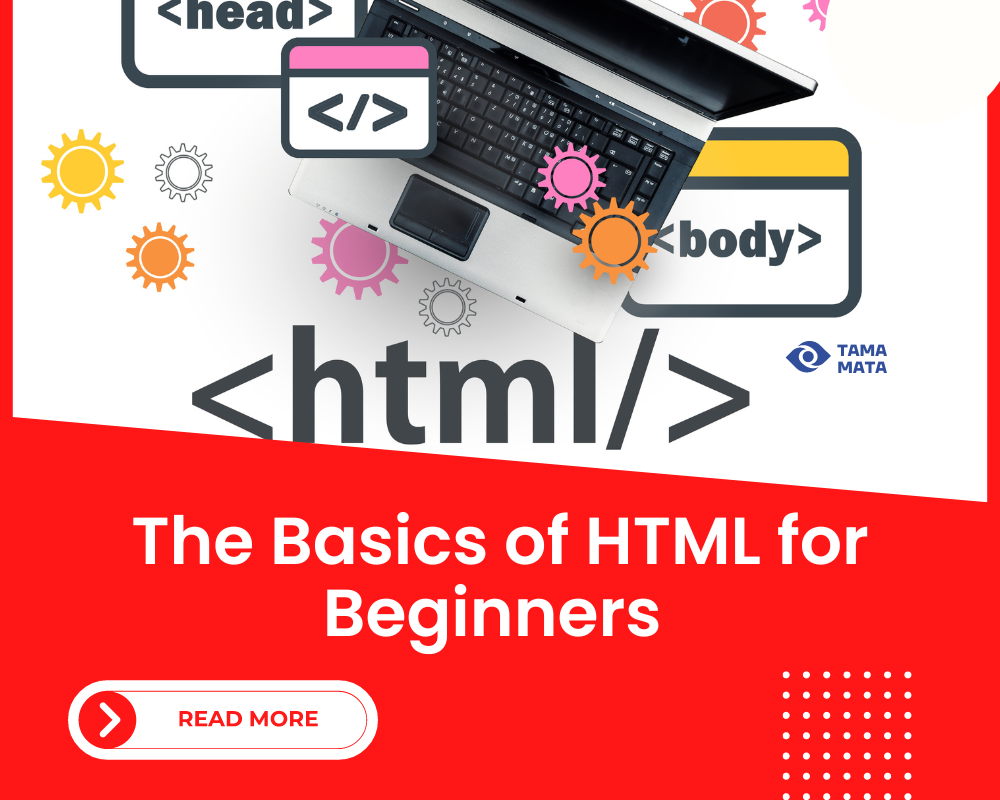5 Interesting Predictions about the Future of Blockchain
The future of Blockchain is going to change the world. But how? You’ve heard the term “blockchain” thrown around often. […]
Dec 8, 2022
Jan 26, 2023

Are you a beginner looking to learn the basics of HTML? Whether you’re a web developer, content creator, or aspiring coder, understanding HTML is key to your success. Not only does it help you create websites that look great and work properly, but it also serves as the foundation for more complex coding languages like JavaScript and CSS. If you’re just getting started with HTML, this guide will provide an introduction to the language and its fundamentals.
HTML stands for Hypertext Markup Language, and it’s the main coding language used to build websites. It allows developers to use tags words surrounded by angle brackets to define different elements on a page. These tags tell web browsers how to display content when visitors visit a website. For example, if you want some text to appear in boldface, you would use the tag around that text.
The purpose of HTML is to facilitate the communication between a website and its users by creating a visual representation that can be understood by both humans and computers. HTML code is written in plain text which makes it easy to understand and modify. It also allows authors to create complex websites with dynamic content quickly.

HTML5 is the most recent version of Hypertext Markup Language which was released in 2014. It added several new features such as audio/video elements, forms validation support, application-cache support for offline web applications and more semantic elements such as sectioning elements thus making it easier for developers to create more accessible websites with better structure.
HTML supports almost all modern browsers including Firefox, Chrome, Safari and Internet Explorer. Despite its simplicity there are still lots of features available through HTML that allow you to customize your website from basic styling information (i.e color) to creating interactive experiences (i.e animation). With these features being so readily available HTML offers an excellent platform for web development that can be used for any kind of project from simple static pages to complex dynamic websites containing multiple technologies such as JavaScript and CSS3.
Basic HTML tags are the foundation of any website’s structure and content. They provide a way to differentiate between different types of content, such as headings and paragraphs. It identify parts of a web page, such as links and images. Also, it add styling to a page, like bolding or italicizing text. This is done using various HTML tags, which are labels surrounded by angle brackets.
In addition to providing formatting instructions for your content, proper usage of HTML tags also makes your web pages more accessible to search engine robots that crawl websites for indexing purposes. This is because when properly implemented, HTML tags help define the structure of your content for crawlers so that it can better understand what each page is about and what keywords it should focus on when ranking it in search results.
Below are some of the basic HTML tags:

Attributes are an important part of HTML, and provide additional information about an HTML element. Attributes are added to the opening tag of an HTML element in the format “attribute name=”value””, and can be used to customize the look and functionality of a web page. The most commonly used attributes include id, class, style, src, and href.
The id attribute is used to give a unique identifier to an element on a page, while the class attribute assigns classes (groups) of elements so they can be styled using CSS. The style attribute is used to add inline styling directly to elements on the page by applying CSS properties directly. The src attribute specifies the link (URL) of where an external resource such as images or videos should be loaded from. Finally, the href attribute is used for linking to other pages or sections of a website.
All attributes must be written in lowercase letters and double-quoted strings must be used for values that contain spaces or special characters. Additionally, all attributes are optional but some HTML elements will require certain attributes in order for them to function correctly. It’s important to note that some browsers may not recognize all HTML5 attributes so it’s best practice
It is difficult to predict exactly how HTML will look in 2023, as it is constantly evolving and being updated. However, some likely developments in HTML that could occur in 2023 include:
Semantic elements such as <header>, <nav>, <main>, and <footer> provide more meaning to the structure of a web page, making it easier for search engines and assistive technologies to understand. As a result, it is likely that these elements will be used more widely in HTML in 2023.
Accessibility is becoming an increasingly important consideration in web design, and HTML will likely continue to evolve in 2023 to make it easier for people with disabilities to access and use the web. This could include the use of more semantic elements, as well as the development of new accessibility features such as ARIA roles.
HTML5 is the latest version of HTML, and it is likely that more and more web developers will be using it in 2023. This version of HTML introduced new features such as semantic elements, multimedia support, and offline storage, which can be used to create more interactive and engaging web pages.
Web components are a set of technologies that allow developers to create custom, reusable elements for web pages. These elements can be used across multiple web pages, and can be easily shared and reused by other developers. It is likely that the use of web components will increase in 2023.
In 2023, we can expect to see an even greater focus on accessibility and user experience through new features such as augmented reality and voice user interfaces. As these technologies become more commonplace, they’ll no doubt change how web developers use HTML – but one thing remains certain: HTML will continue to be an essential tool for building websites well into the future.

The future of Blockchain is going to change the world. But how? You’ve heard the term “blockchain” thrown around often. […]
Dec 8, 2022

A VPN, or virtual private network, is a way to make your online activity more secure and private. When you […]
Dec 8, 2022

When You Should Splurge on a Custom Website vs When a Templated Website Is Just Fine Building a website is […]
Dec 14, 2022
Join our newsletter and be the first to receive future promo and sale updates from Rooche!